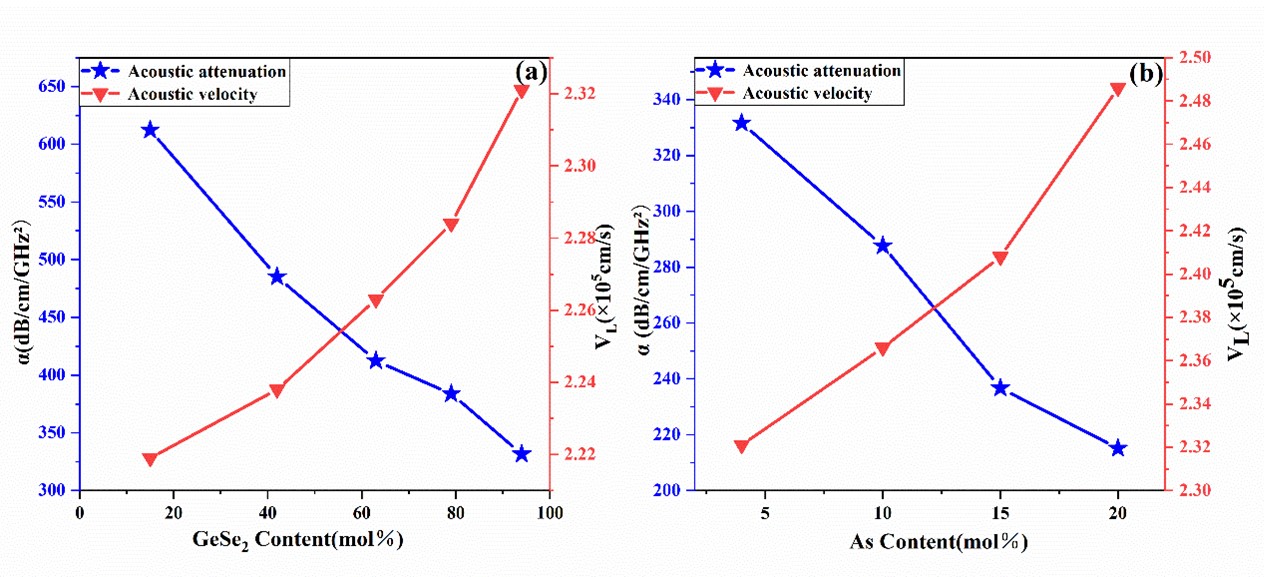Brillouin lasers based on the SBS effect are widely used in fiber optic sensing, fiber optic gyro and coherent optical communication systems due to their narrow linewidth, good coherence, and stable output at multiple wavelengths. Currently, the SBS effect of various optical fiber is being used to make new types of Brillouin fiber lasers with high Brillouin gain. The Brillouin parameters of optical fiber depends on the substrate materials and fiber structure. The Brillouin frequency shift (vB), linewidth (∆vB) and gain coefficient (gB) of fiber with varied material matrices are very different. CHG glass is widely used as a gain medium for Brillouin lasers because of its high refractive index, wide transparency range, high third-order nonlinear coefficient and better resistance to electromagnetic interference. However, the composition of ChG glass fiber based on SBS effect is mostly limited to As2Se3 and As2S3.The softening temperatures of these two substrate glasses are low, making it difficult for them to withstand high power laser pumping. Therefore, the selection of ChG systems and the optimization of compositions to explore novel substrate materials with high softening temperature and high Brillouin gain coefficients are of high importance.
In this study, Two series of glasses, xGeSe2-(100-x) As2Se3and Ge30AsySe70-y were prepared. It is the first time to demonstrate that Ge-As-Se CHG glass is a promising substrate material for high Brillouin gain fibers in terms of both acousto-optical parameters and the stability of glass against crystallization. The study focuses on the estimation of Brillouin gain coefficients (gB) based on the close relationship between known material acousto-optic parameters and Brillouin gain in Table 1. ThegB of Ge30As20Se50 (gB= 33.77×10-11m/W) was higher than that of the conventional arsenide glasses As2Se3 (gB= 20.89×10-11m/W) and As2S3 (gB= 14.43×10-11m/W). The acoustic attenuation of most glasses was lower than As2S3(401.6 dB/cm/GHz2) and As2Se3 (692.3 dB/cm/GHz2) at 100 MHz ultrasonic frequency As shown in Figure 1. All glasses had ΔT greater than 100 °C and had good stability against crystallization, providing a working basis for the next step of drawing the fiber. On the basis of Ge30As20Se50 host glass, a high-purity chalcogenide single-refractive-index fiber was drawn with a minimum optical loss of 0.7 dB/m at 6.5 μm As shown in Figure 2. The above results provide an important reference for the further development of new ChG glass fiber with high gB.
Table 1 Related parameters of for glass samples.

All parameters were measured at 1550 nm.

Fig. 1. Acoustic attenuation (α) and acoustic velocity (VL) versus different content in (a) xGeSe2-(100-x) As2Se3 glasses; (b) Ge30AsySe70-y glasses.

Fig. 2. Optical loss spectrum of Ge30As20Se50 glass fiber (inset image is the fiber cross-section)


